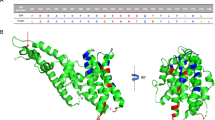Abstract
The antibody response of mice infected withPlasmodium vinckei after treatment with chloroquine either alone or in combination with interferon-γ (IFN-γ) was determined. Sequential serum samples were drawn from BALB/c mice receiving either 240 μg chloroquine on the day of infection or 120 μg chloroquine plus 104 units IFN-γ daily for 11 days beginning on day 3 prior to infection. Mice treated with additional IFN-γ showed an early induction of IgG2a response and a reduction in IgG1 antibodies as detected by the immunofluorescence technique at between 10 and 16 days after infection as compared with mice treated with chloroquine alone. Thus, IFN-γ may partly exert its antimalarial activity via the induction of IgG2a antibody formation. At 4–6 weeks after infection, when mice from both groups resisted homologous re-infection, the predominant antibody isotypes found in both groups were IgG1 and IgG2a. Serum samples obtained from mice in both treatment groups at 6 weeks after infection were used for serum transfer experiments. When parasitised erythrocytes were preincubated with such immune serum, a retardation of the course of parasitaemia by 2 days was observed.
Similar content being viewed by others
References
Bienzle U, Fritsch KG, Hoth G, Rodzinski E, Köhler K, Kalinowski M, Kremsner P, Rosenkaimer F, Feldmeier H (1988) Inhibition ofPlasmodium vinckei-malaria in mice by recombinant murine interferon-γ. Acta Trop (Basel) 45:289–290
Clark IA, Hunt NH, Butcher GA, Cowden WB (1987) Inhibition of murine malaria (Plasmodium chabaudi) in vivo by recombinant interferon-γ or tumor necrosis factor, and its enhancement by butylated hydroxyanisole. J Immunol 139:3493–3496
Ferreira A, Schofield L, Enea V, Schellekens H, Meide P van der, Collins WE, Nussenzweig RS, Nussenzweig V (1986) Inhibition of development of exoerythrocytic forms of malaria parasites by γ-interferon. Science 232:881–883
Finkelman FD, Katona IM, Mosmann TR, Coffman RL (1988) IFN-γ regulates the isotypes of Ig secreted during in vivo humoral immune responses. J Immunol 140:1022–1027
Grun JL, Weidanz WP (1983) Antibody-independent immunity to reinfection malaria in B-cell deficient mice. Infect Immun 41:1197–1204
Heath AW, Playfair JHL (1990) Conjugation of interferon-gamma to antigen enhances its adjuvanticity. Immunology 71:454–456
Heath AW, Devey ME, Brown IN, Richards CE, Playfair JHL (1989) Interferon-gamma as an adjuvant in immunocompromised mice. Immunology 67:520–524
Holland GP, Holland N, Steward MW (1990) Interferon-gamma potentiates antibody affinity in mice with a genetically controlled defect in affinity maturation. Clin Exp Immunol 82:221–226
Kremsner PG, Zotter GM, Feldmeier H, Graninger W, Rocha RM, Jansen-Rosseck R, Bienzle U (1990) Immune response in patients during and afterPlasmodium falciparum infection. J Infect Dis 161:1025–1028
Kremsner PG, Neifer S, Schermuck S, Ferreira Chaves M, Sliwa K, Bienzle U (1991) Interferon-γ enhances the effect of antimalarial chemotherapy in murinePlasmodium vinckei malaria. J Infect Dis 163:1161–1163
Kumar S, Good MF, Dontfraid F, Vinetz JM, Miller LH (1989) Interdependence of CD4+T cells and malarial spleen in immunity toPlasmodium vinckei vinckei. J Immunol 143:2017–2023
Langhorne J, Evans CB, Asofsky R, Taylor DW (1984) Immunoglobulin isotype distribution of malaria-specific antibodies produced during infection withPlasmodium chabaudi adami andPlasmodium yoelii. Cell Immunol 87:452–461
Majarian WR, Daly TM, Weidanz WP, Long CA (1984) Passive immunization against murine malaria with an IgG3 monoclonal antibody. J Immunol 132:3131–3137
Podoba JE, Stevenson MM (1991) CD4+ and CD8+T lymphocytes both contribute to acquired immunity to blood-stagePlasmodium chabaudi AS. Infect Immun 59:51–58
Sayles PC, Wassom DL (1988) Immunoregulation in murine malaria. J Immunol 141:241–248
Schetters TPM, Hermsen CC, Zon AAJC van, Eling WMC (1988) Stage-specific proteins ofPlasmodium berghei-infected red blood cells detected by antibodies of immune mouse serum. Parasitol Res 75:69–72
Schetters TPM, Run-van Breda JHJ van, Hermsen C, Curfs J, Eling WMC (1989) Protective and pathological activity in serum of mice developing resistance toPladmodium berghei infection. Parasite Immunol 11:413–423
Shear HL, Srinivasan R, Nolan T, Ng C (1989) Role of IFN-γ in lethal and nonlethal malaria in susceptible and resistant murine hosts. J Immunol 143:2038–2044
Slade SJ, Langhorne J (1989) Production of interferon-gamma during infection of mice withPlasmodium chabaudi chabaudi. Immunobiology 179:353–365
Stevenson MM, Nowotarski M, Yap G (1990a) Review: cytokines and malaria. Clin Invest Med 13:353–359
Stevenson MM, Tam MF, Belosevic M, Meide PH van der, Podoba JE (1990b) Role of endogenous gamma interferon in host response to infection with blood-stagePlasmodium chabaudi AS. Infect Immun 58:3225–3232
Taylor DW, Pacheco E, Evans CB, Asofsky R (1988) Inbred mice infected withPlasmodium yoelii differ in their antimalarial immunoglobulin isotype response. Parasite Immunol 10:33–46
Thelu J, Sheick-Zakinddin I, Bondin C, Peyron F, Picot S, Ambroise-Thomas P (1991) Development of natural immunity inPlasmodium falciparum malaria: study of antibody response by Western immunoblotting. J Clin Microbiol 29:510–518
Troye-Blomberg M, Riley EM, Kabilan L, Holmberg M, Perlmann H, Andersson U, Heusser CH, Perlmann P (1990) Production by activated human T cells of interleukin-4 but not interferon-γ is associated with elevated levels of serum antibodies to activating malaria antigens. Proc Natl Acad Sci USA 87:5484–5488
Waki S, Tagkagi T, Suzuki M (1989) Acquirement of protective immunity in mice through infection with an attenuated isolate and its failure in parent virulentPlasmodium berghei. Parasitol Res 75:614–618
White WI, Evans CB, Taylor DW (1991) Antimalarial antibodies of the immunoglobulin G2a isotype modulate parasitemias in mice infected withPlasmodium yoelii. Infect Immun 59:3547–3554
Author information
Authors and Affiliations
Rights and permissions
About this article
Cite this article
Finnemann, S., Kremsner, P.G., Chaves, M.F. et al. Antibody response inPlasmodium vinckei malaria after treatment with chloroquine and adjuvant interferon-γ. Parasitol Res 78, 629–634 (1992). https://doi.org/10.1007/BF00931511
Accepted:
Issue Date:
DOI: https://doi.org/10.1007/BF00931511




